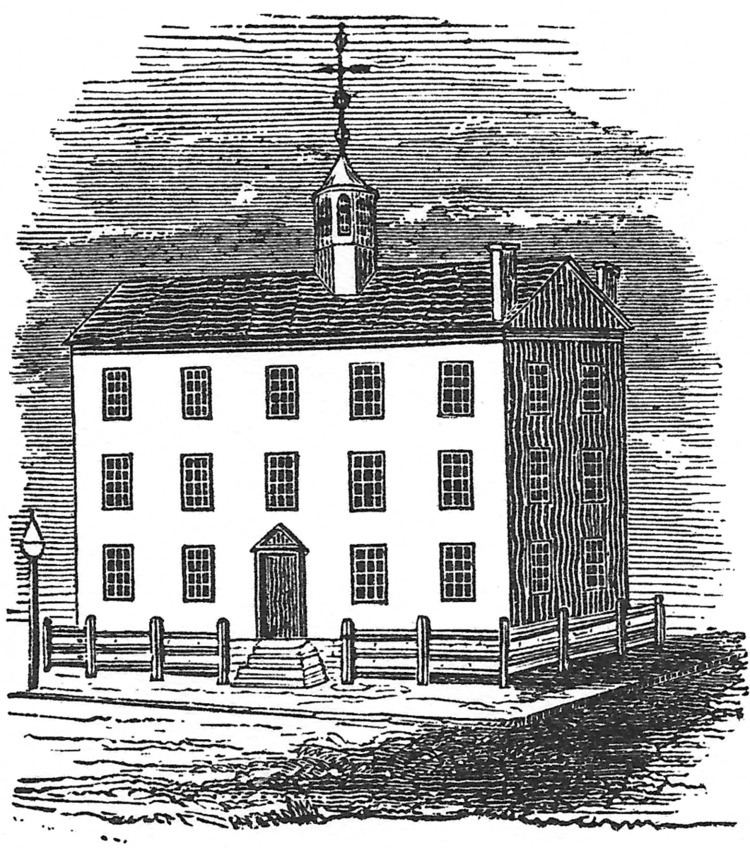Members 32 Members 100 | Party control Clintonian | |
 | ||
Term July 1, 1806 – June 30, 1807 President Lt. Gov. John Broome (Clintonian) | ||
The 30th New York State Legislature, consisting of the New York State Senate and the New York State Assembly, met from January 27 to April 7, 1807, during the third year of Morgan Lewis's governorship, in Albany.
Contents
Background
Under the provisions of the New York Constitution of 1777, amended by the Constitutional Convention of 1801, 32 Senators were elected on general tickets in the four senatorial districts for four-year terms. They were divided into four classes, and every year eight Senate seats came up for election. Assemblymen were elected countywide on general tickets to a one-year term, the whole assembly being renewed annually.
In 1797, Albany was declared the State capital, and all subsequent Legislatures have been meeting there ever since. In 1799, the Legislature enacted that future Legislatures meet on the last Tuesday of January of each year unless called earlier by the governor.
State Senator Ebenezer Purdy resigned on March 16, 1806, to avoid being expelled for bribery, leaving a vacancy in the Southern District.
In 1806, three new counties were created: Allegany County was split from Genesee County, but remained with Genesee and Ontario County in one Assembly district. Broome County was split from Tioga County, but remained with Tioga in one Assembly district. Madison County was split from Chenango County, and was apportioned two seats in the Assembly, taken from Chenango.
At this time the politicians were divided into two opposing political parties: the Federalists and the Democratic-Republicans.
In 1805, the 28th Legislature had chartered the Merchant's Bank of New York which had been founded by Federalists in competition to the Democratic-Republican Bank of the Manhattan Company. The Democratic-Republican majority of the 27th Legislature had not only refused to grant a charter, but actually ordered the Merchant's Bank to shut down by May 1805. During the next session, the bank bribed enough legislators to have the charter approved, although the Democratic-Republican leaders advocated strongly against it. Gov. Morgan Lewis spoke out in favor of granting the charter what was resented by the party leaders DeWitt Clinton and Ambrose Spencer, and soon led to the split of the party into "Lewisites" and "Clintonians".
Elections
The State election was held from April 29 to May 1, 1806. Senators James Burt (Middle D.) and Jacob Snell (Eastern D.) were re-elected. Jonathan Ward (Southern D.), Elisha Barlow (Middle D.), John Ballard, Salmon Buell, Jacob Gebhard and Nathan Smith (all four Western D.) were also elected to the Senate. Assemblyman Benjamin Coe (Southern D.) was elected to fill the vacancy. Burt, Barlow and Snell were Lewisites, the other six were Clintonians.
Sessions
The Legislature met at the Old City Hall in Albany on January 27, 1807; and adjourned on April 7.
Lewisite Andrew McCord was elected Speaker with the help of the Federalists, with 53 votes against 40 for Clintonian Alexander Sheldon, the Speaker of the previous session. Lewisite Gerrit Y. Lansing was elected Clerk of the Assembly, defeating the Clintonian incumbent Solomon Southwick by a majority of 6 votes. On February 2, Southwick was elected Clerk of the Senate.
On February 3, 1807, the Legislature re-elected John Smith (Dem.-Rep.) to a full term in the U.S. Senate.
Districts
Members
The asterisk (*) denotes members of the previous Legislature who continued in office as members of this Legislature. Benjamin Coe changed from the Assembly to the Senate.
Employees
Assemblymen
The asterisk (*) denotes members of the previous Legislature who continued as members of this Legislature.
